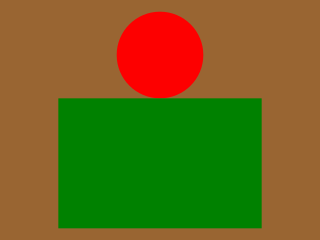
The Brockville Rifles is a Primary Reserve infantry regiment of the Canadian Army. The unit is a part of the 33 Canadian Brigade Group, 4th Canadian Division. It is fifteenth in the order of precedence of Canadian Army Infantry Regiments.
The 125th Battalion, CEF was a unit in the Canadian Expeditionary Force during the First World War.
The 215th Battalion, CEF was a unit in the Canadian Expeditionary Force during the First World War.

The 19th Alberta Dragoons was a cavalry regiment and later an armoured regiment of the Canadian Militia and later the Canadian Army. It was placed on the Supplementary Order of Battle in 1965. In 2006, it was taken off the Supplementary Order of Battle and amalgamated with the South Alberta Light Horse.
The Peel and Dufferin Regiment was an infantry regiment of the Non-Permanent Active Militia of the Canadian Militia. First organized in 1866 as the 36th Peel Battalion of Infantry, the regiment was reorganized in 1900 as the 36th Peel Regiment. Following the First World War, the regiment was reorganized again in 1920 as The Peel Regiment and for the final time in 1923 as The Peel and Dufferin Regiment. In 1936, the regiment was Amalgamated with The Lorne Rifles (Scottish) to form The Lorne Scots.

The 29th Battalion (Vancouver), CEF was an infantry battalion of the Canadian Expeditionary Force during the Great War.
The 37th Battalion, CEF, was an infantry battalion of the Canadian Expeditionary Force during the Great War.
The 12th Battalion, CEF was an infantry battalion of the First World War Canadian Expeditionary Force.

4th Battalion, CEF was an infantry battalion raised as part of the Canadian Expeditionary Force for service during the First World War. Raised in Canada in September 1914, the battalion sailed to the United Kingdom within weeks of its establishment. After a short period of training it was committed to the fighting on the Western Front, remaining in France and Belgium until the war ended. It returned to Canada in mid-1919 and after its personnel had been demobilized, the battalion was subsequently disbanded in 1920.
The 50th Field Artillery Regiment, Royal Canadian Artillery was a Canadian Army Reserve artillery regiment based in Peterborough, Ontario. The regiment exists "on paper" on the Supplementary Order of Battle.
The 56th Field Artillery Regiment, Royal Canadian Artillery is a Canadian Army Reserve artillery regiment based in Brantford, Ontario. The regiment is currently part of 4th Canadian Division's 32 Canadian Brigade Group.
The 32nd Battalion, CEF, was an infantry battalion of the Canadian Expeditionary Force during the Great War.

The 44th Battalion (Manitoba), CEF, was an infantry battalion of the Canadian Expeditionary Force during World War I.

The 54th Battalion (Kootenay), CEF, was an infantry battalion of the Canadian Expeditionary Force during the Great War.
The 74th Battalion, CEF was an infantry battalion of the Canadian Expeditionary Force during the Great War. The battalion was authorized on 10 July 1915 and embarked for Great Britain on 29 March 1916 where it provided reinforcements to the Canadian Corps in the field. On 30 September 1916 its personnel were absorbed by the 50th Battalion (Calgary), CEF, the 51st Battalion (Edmonton), CEF, the 52nd Battalion, CEF and the 2nd Battalion, Canadian Mounted Rifles, CEF. The battalion was disbanded on 15 September 1917.
The 76th Battalion, CEF was an infantry battalion of the Canadian Expeditionary Force during the Great War. The 76th Battalion was authorized on 10 July 1915 and embarked for Great Britain on 23 April 1916. It provided reinforcements to the Canadian Corps in the field until 6 July 1916, when its personnel were absorbed by the 36th Battalion, CEF. The battalion was subsequently disbanded on 17 July 1917.

The 114th Battalion (Haldimand), CEF, also known as "Brock's Rangers," was an infantry battalion of the Great War Canadian Expeditionary Force. The 114th Battalion was authorized on 22 December 1915 and embarked for Britain on 31 October 1916 where, on 11 November 1916, its personnel were absorbed by the 35th and 36th Reserve Battalions, CEF, to provide reinforcements for the Canadian Corps in the field. The battalion disbanded on 21 May 1917.
The Haldimand Rifles was an infantry regiment of the Non-Permanent Active Militia of the Canadian Militia. In 1936, the regiment was Amalgamated with The Dufferin Rifles of Canada to form The Dufferin and Haldimand Rifles of Canada.
The Dufferin and Haldimand Rifles of Canada was an infantry regiment of the Non-Permanent Active Militia of the Canadian Militia and later the Canadian Army. The regiment was formed in 1936, when The Haldimand Rifles was Amalgamated with The Dufferin Rifles of Canada. In 1946, the regiment was converted from Infantry to Artillery and now forms part of the 56th Field Artillery Regiment, RCA.
The Dufferin Rifles of Canada was an infantry regiment of the Canadian Non-Permanent Active Militia 1866-1936.







